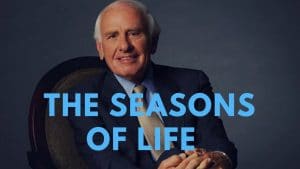Striking Back: Krav Maga Chokes & Wrestling Techniques Demystified
Master the Art of Close Combat with Krav Maga's Effective Chokes & Wrestling Tactics
In the realm of self-defense and hand-to-hand combat, proficiency in close-quarters combat techniques can mean the difference between life and death. Krav Maga, known for its practical and no-nonsense approach to self-defense, offers a comprehensive system of chokes and wrestling techniques designed to neutralize threats quickly and decisively. In this guide, we’ll dive into the world of Krav Maga chokes and wrestling techniques, uncovering the strategies and tactics that empower practitioners to defend themselves effectively in real-world situations.
Chapter 1: Understanding Close Combat in Krav Maga
Close combat is a cornerstone of Krav Maga training, focusing on rapid, efficient techniques for neutralizing threats at close range. In this chapter, we’ll explore the principles and mindset behind close combat in Krav Maga, emphasizing the importance of aggression, decisiveness, and adaptability in confrontational situations.
Chapter 2: Chokes: The Silent Takedown
Chokes are a powerful tool in the Krav Maga arsenal, allowing practitioners to incapacitate opponents quickly and silently. In this chapter, we’ll delve into the various types of chokes used in Krav Maga, including rear naked chokes, guillotine chokes, and lapel chokes. Through step-by-step instructions and detailed explanations, practitioners learn how to execute chokes with precision and effectiveness.
Chapter 3: Wrestling Techniques for Close Combat
Wrestling techniques play a crucial role in Krav Maga, providing practitioners with the ability to control and subdue opponents in close-quarters combat. In this chapter, we’ll explore wrestling techniques such as takedowns, throws, and joint locks, emphasizing the importance of leverage, balance, and timing in executing these techniques successfully.
Chapter 4: Defenses Against Chokes and Grabs
In addition to offensive techniques, Krav Maga teaches practitioners how to defend against chokes, grabs, and other attacks commonly encountered in close combat situations. In this chapter, we’ll cover defensive techniques such as escapes from chokes, counters to grabs, and strategies for maintaining distance and control when under attack.
Chapter 5: Scenario-Based Training and Application
Scenario-based training is a cornerstone of Krav Maga instruction, allowing practitioners to test their skills in realistic situations and environments. In this chapter, we’ll discuss the importance of scenario-based training in mastering Krav Maga chokes and wrestling techniques, as well as strategies for applying these techniques effectively in real-world self-defense situations.
Conclusion:
As we conclude our exploration of Krav Maga chokes and wrestling techniques, we are reminded of the importance of preparation, training, and mindset in effective self-defense. Whether you’re a beginner learning the basics or an experienced practitioner honing your skills, mastering Krav Maga chokes and wrestling techniques empowers you to defend yourself and others with confidence and competence. So, train diligently, stay vigilant, and strike back against threats with the power of Krav Maga close combat techniques.
The transcript highlights the experiences of the person referred to as Esther during her meditation practice. It mentions that initially, she experiences a state of numbness, which is followed by sensations of movement in her body. These sensations, such as twitches and itches, are described as the energy of Source beginning to dominate her vibration and dissolve any lower vibrational frequencies related to resistance or negative emotions.
As Esther progresses in her meditation practice, she starts to feel the impulses to move, yawn, or respond to music. These movements and responses are attributed to the non-physical aspect of her being, which is in tune with broader perspective or Source energy. It is emphasized that allowing these movements and responses is a positive sign of being in an open and receptive state, aligning with the energy of Source.
The transcript also touches upon the idea that the experience of Source energy can vary from person to person. Each individual may perceive or feel it differently, akin to how different sounds are heard by different individuals or animals. The speaker suggests that one’s own emotions and state of being can influence the perception of Source energy. For example, feeling love and appreciation enhances the connection and perception of Source energy, while negative emotions like anger or despair may distort its perception.
Throughout the discussion, it is emphasized that meditation and the resulting connection with Source energy are not strange or unusual phenomena. Instead, they are seen as natural aspects of one’s being and an alignment with one’s true self. The purpose of meditation is described as closing the gap between the physical self and the inner being, allowing one to be more aligned with their authentic self and enjoy life more fully.
In summary, the transcript explores the experiences of Esther during her meditation practice, emphasizing the importance of quieting the mind, allowing Source energy to dominate one’s vibration, and experiencing the resulting sensations and movements as indicators of alignment and connection with one’s inner being.







